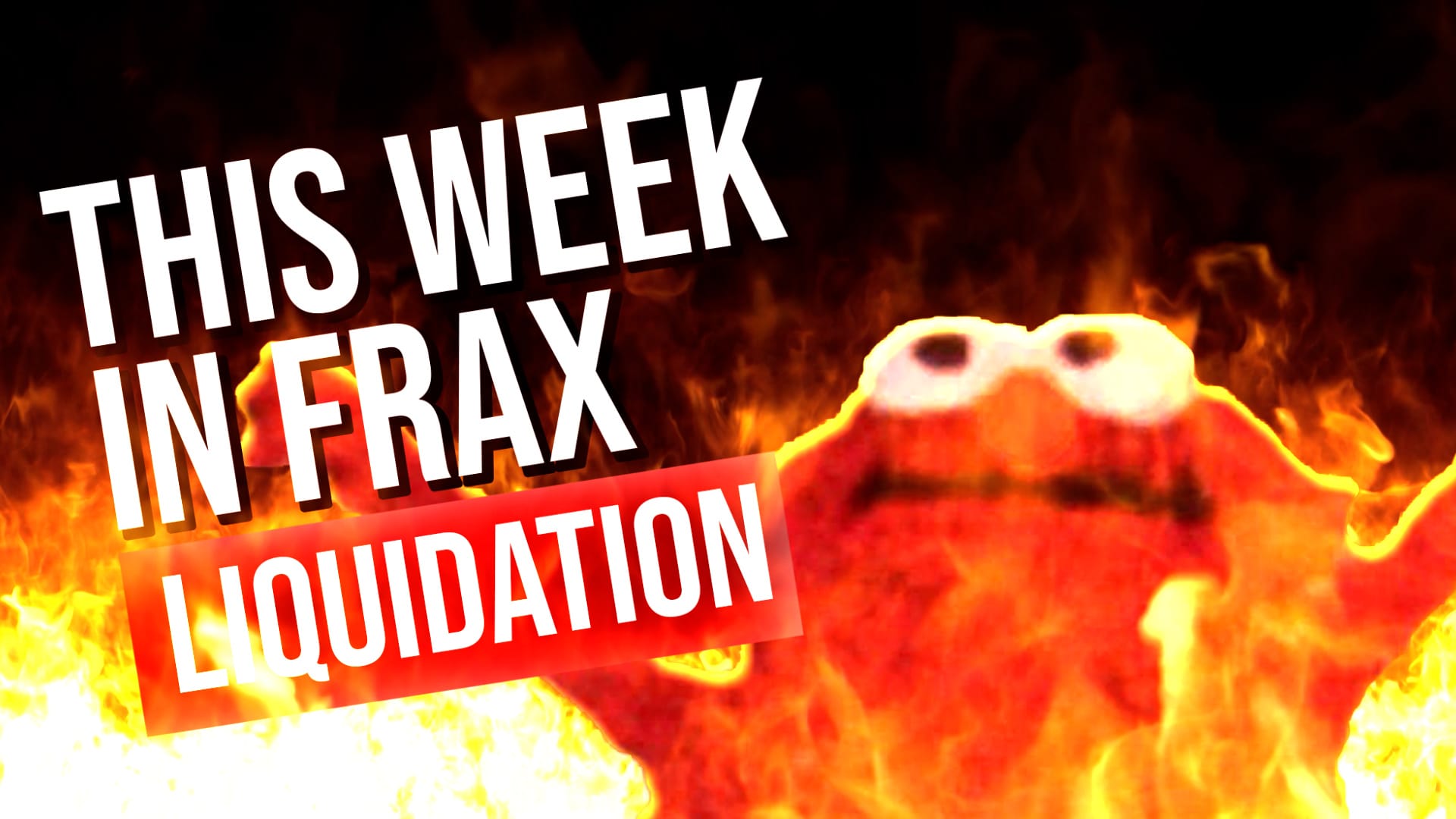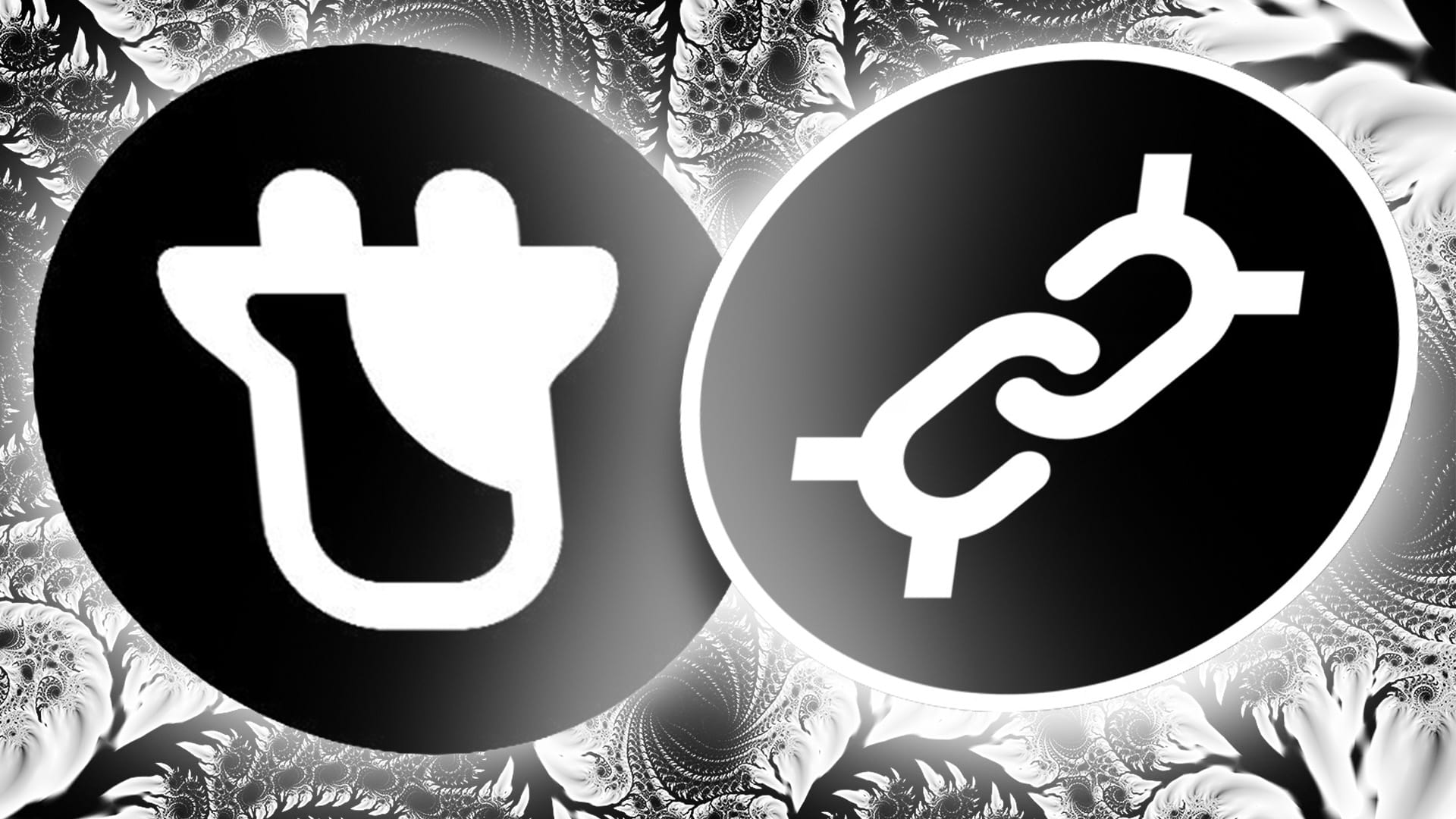We finally got a full look at the docs for the upcoming full launch of Frax's modular L2, Fraxtal. There's a ton to unpack, so we've gone through all the whole release info and break it down in this article. If you have any questions, please come join the Flywheel Telegram.
What is Fraxtal
According to the docs, Fraxtal is an EVM equivalent modular rollup using the OP stack as its smart contract and execution environment.
Rollups are a type of Layer 2 scaling solution built on top of Ethereum. There are two types of rollups, ZK and Optimistic. ZK rollups use "zero knowledge proofs" to validate transactions without revealing the details and prove a set of transactions is valid. Optimistic rollups always assume transactions are valid unless proven otherwise. They use a fraud proof system where anyone can challenge an invalid transaction, which leads to a dispute process. Optimistic rollups are less secure than ZK rollups, but they allow for faster development and deployment, lower fees, and have greater integration across the OP stack. Most rollups deployed right now are Optimistic, with the assumption they will switch to ZK once more research and development is completed.

Furthermore, Fraxtal is modular, meaning its consensus, settlement, execution and data availability are broken into separate modules. This allows for improved future scalability, massive potential innovation in the future, and flexibility. Already Fraxtal is using an internally developed data availability layer developed by the Frax Core Team. Fraxtal's modular design will enable middleware and other components from other networks to easily integrate to connect and deploy L3s on top of Fraxtal.
Gas, frxETH, and Monetary Premium
The most novel thing about Fraxtal is that it uses Frax's liquid staking token frxETH as its gas token. It is the first of its kind to have this vertically integrated setup and completes the demand flywheel.
All other LST's have one function, the represent staked ETH and collect rewards from Ethereum's consensus layer. These LST's are not substitutes for Ethereum and cannot be used for paying gas. This disconnect between the two assets means that LST's utility is capped solely as a collateral asset.
On Fraxtal, Frax's LSD frxETH is the gas token. frxETH uses a novel two token design that forces users to choose between earning staking rewards or providing liquidity and paying gas on Fraxtal. The more demand there is for the latter, the smaller the pool of sfrxETH stakers and the higher the rewards.

Up until now, the only sink for frxETH was liquidity. Frax only supports FXS gauge rewards for frxETH. Users had to choose whether to stake sfrxETH and earn ETH rewards or provide liquidity with frxETH on Curve or one of the other DEX's and earn FXS, CRV, CVX, or other reward tokens. In the chart above from Frax Facts, you can see the current split of tokens between sfrxETH and frxETH. As of writing, 73% is staked as sfrxETH earning ETH rewards and the other 27% is used for liquidity. The split gives sfrxETH a 36% bump in reward yield as a result.
Fraxtal will create a new massive sink for frxETH as it will be the first and primary gas token. All gas on Fraxtal will be paid in frxETH and users will need to buy, bridge and hold on Fraxtal. As demand for Fraxtal blockspace increases, the amount of gas consumed by the network will also rise, further driving sfrxETH yields. Sam Kazemian said in a recent interview that demand for frxETH as gas on Fraxtal potentially could increase sfrxETH yields 2-3x what stETH and rETH provide.
This all ties back into Kazemian's Stablecoin Maximalism Thesis he presented last year at ETH Denver. Let's review what we wrote back then:
The success of a stablecoin can be measured by its monetary premium which is the demand for an issuer’s stablecoin to be held purely for its usefulness without expectation of any interest rate, payment of incentives, or other utility from the issuer. At scale, all stablecoins converge to have the same structure, but what does this structure look like?
Every stablecoin consists of a two part mechanism; the “risk-free yield” and swap facility. The risk-free yield (RFY) is the revenue generated by the assets backing the stablecoin in the lowest risk venue within the system based on its reference peg. The swap facility is where a stablecoin can be redeemed for its reference peg.
frxETH is the stablecoin, sfrxETH provides the "risk free yield," Curve and other liquidity venues provide the swap facility. And now with Fraxtal, we finally have a venue that will create real, organic monetary premium by users who hold frxETH solely for the utility of paying gas fees.
Fraxtal's Flywheel: Blockspace Incentives (FLOX)
As Frax's primary goal is to increase the monetary premium for its stablecoins, its implementing Blockspace Incentives, a novel incentive structure for Fraxtal that rewards users, developers and applications for spending gas and interacting with smart contracts on the network.
On every other network, the biggest applications and power users earn zero revenue for spending gas. An application like GMX on Arbitrum drives thousands of users and is one of the largest spenders of gas on their contracts, yet they receive nothing (other than massive governance token airdrops and ongoing rewards voted on by the DAO) for increasing the value of the network. While some newer network are experimenting with gas rebates or rewards, the network can never give more back than it earns.
On Fraxtal, the goal with Blockspace incentives is to rewards users and contracts with more than $1 worth of rewards for every equivalent dollar of gas spent. Frax does this by assigning FXTL points through its Fraxtal Point System. These points accumulate on a 7 day period (1 epoch). In the future, FXTL points will be tokenized and or convert to veFXS, which represents locked FXS. By doling out points with a fixed vesting period, Frax can give more than $1 worth of rewards back, as the lock-in period will offset any Sybil attacks caused by farmers insta-dumping their rewards as soon as they receive distributions.
In the docs, its written that FXTL points will be tokenized within 12 months of launch. Whether this is as its own separate token or convertible to veFXS is unclear. The Frax DAO will have to vote on this decision in the future once the program has run several months and sufficient data is collected analyzing the two outcomes.
The FLOX algorithm tracks and rewards both sides of a transaction, the gas payers and spenders. It does this by "calculating a transaction trace of gas used by contracts and applying a second algorithm to rank contract importance and additional criteria such as assets held by users and contracts at randomly selected blocks within the epoch."
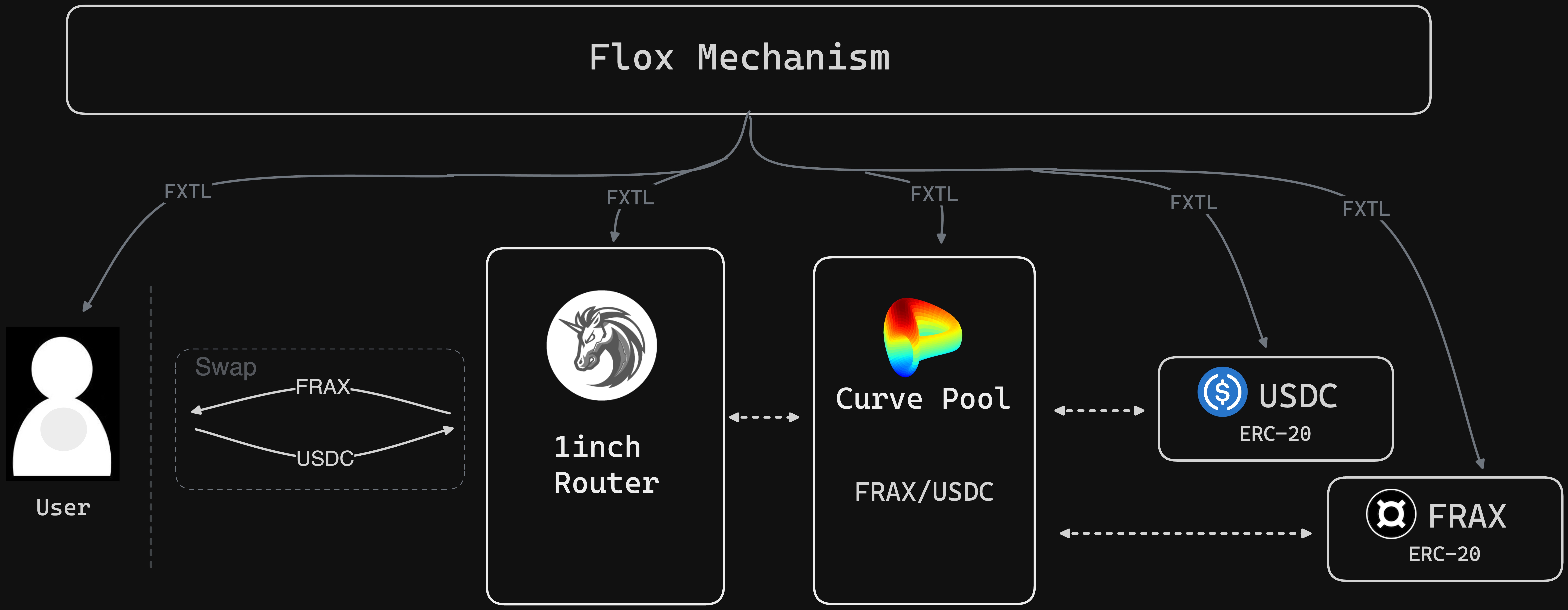
In the docs, an example picture is shown (above) that details all the different contracts that would be eligible for rewards based on a simple swap of FRAX to USDC through Curve using 1inch. Incentives are distributed to the user, 1-inch router contract, Curve pool contract, USDC contract, and FRAX contract.
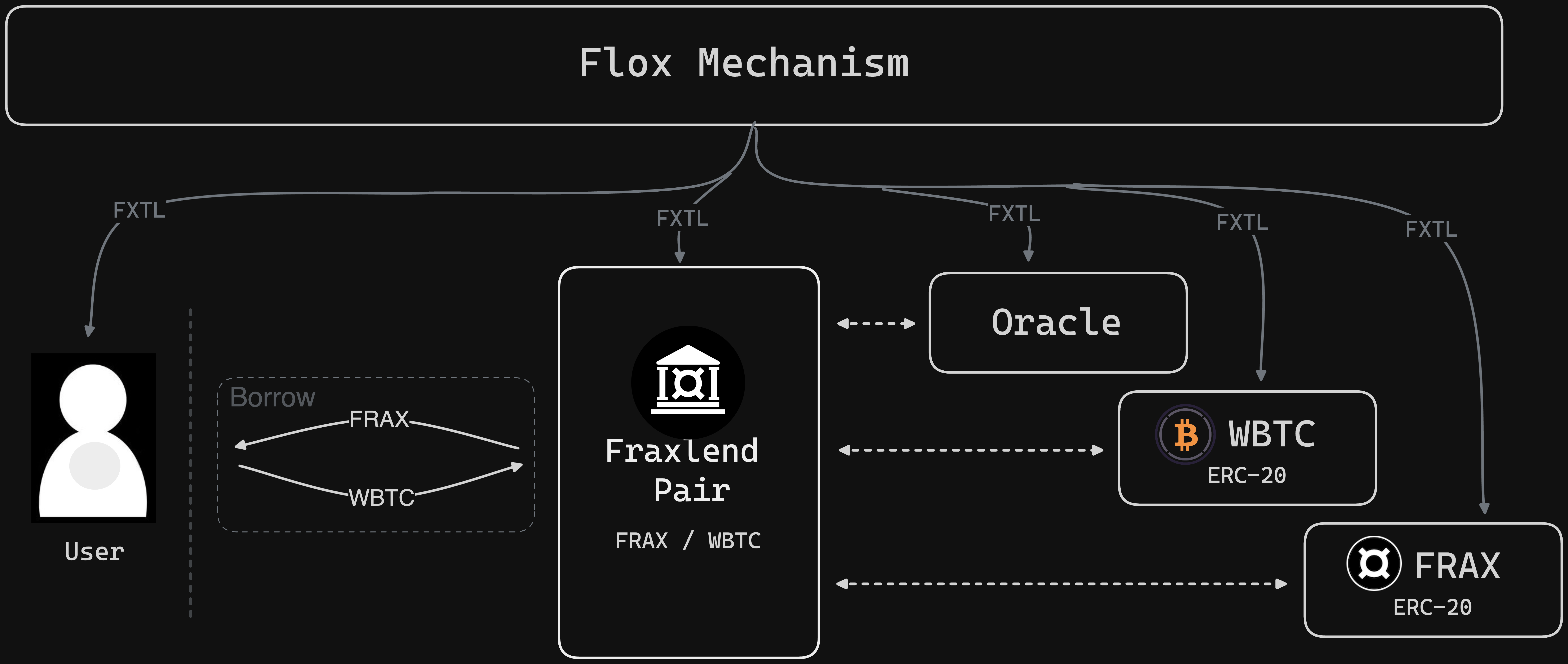
Here's another example of how FLOX would track a Fraxlend transaction. Incentives would go to the user, Fraxlend Pair contract, WBTC contract, FRAX contract, and Chainlink oracle contract.
The Algorithm runs on the following calculation from the docs:

The core determinate of the Flox algorithm is the "Flox Rank," which the docs note was inspired by Google's PageRank algorithm, which revolutionized how we search for webpages by monitoring the importance and activity levels of traffic to websites. Flox draws from this by skewing FXTL rewards towards the largest and most engaged users and apps on Fraxtal.


It's a dual sided calculation. The contracts that get the most usage by the biggest users "are deemed more economically significant and thus assigned to a higher rank." And for users, interacting with the most popular contracts increases ones Flox rank. According to the docs, the points is that it "encourages users to interact with widely-used contracts rather than trying to maximize their incentives through lesser-used or self-owned contracts."
By skewing results, this will prevent malicious bots from sybilling FXTL rewards by deploying a contract and then burning a lot of gas through it from one or a few addresses. Its not enough to burn gas to earn FXTL points, you have to drive actual economic utility to Fraxtal to top the Flox ranks. And even if bots do create contracts solely with the goal of burning gas, it will be offset by a subsequent increase in sfrxETH yields as more frxETH is pulled from the staking contract to earn points. It's this balancing act that will keep the whole system intact. Another L2 trying this system would ultimately fail if it didn't use its own LST for gas. Bots would Sybil the points system, earn tokens and dump. But with Fraxtal, the same maneuver would lead to higher yields for sfrxETH stakers.
The last part of the Flox rank is the boost function, which amplifies FXTL points capture with veFXS. This function "considers the amount of veFXS owned and the significance or tier-based weights assigned by the Fraxtal team to specific smart contracts and asset balances in EOA and/or smart contract accounts." To top the Flox ranks it may not be enough to deploy a popular contract, it will also be necessary to acquire and hold veFXS natively or with vlCVX to vote for ones contract. On first look this process seems similar to the existing veFXS gauge system used for liquidity distribution.
The Frax team also notes that in the future, other types of activity and transactions might be rewarded. Once L3s are deployed on top of Fraxtal, they could be eligible for rewards. Alternatively, other networks that use Frax's DA layer or other parts of its modular rollup could be eligible as well. So we could see a world in which third party networks like Solana, Stacks, or any other major network could be a major player in the FXTL point wars.
New veFXS Contract Support for Fraxtal
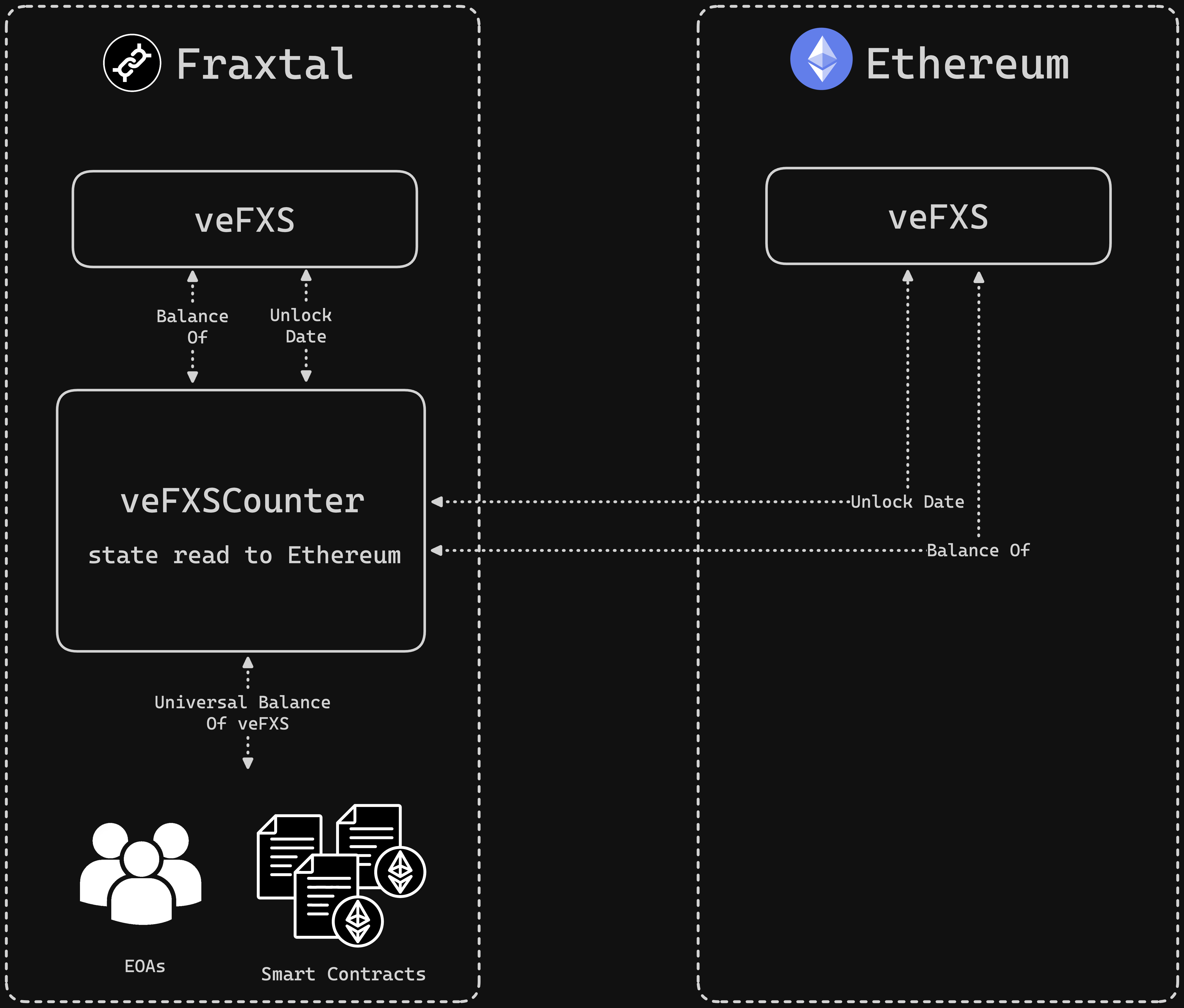
One of the quieter, but bigger upgrades for Fraxtal is a new unifying contract for veFXS that connects both Ethereum and the new L2. Until now, veFXS could only be staked on Ethereum. However with Fraxtal's launch, a new contract called veFXSCounter now creates a new global state of veFXS between the two chains. It allows users to stake FXS on Fraxtal and also tracks the unlock date and balances of the Ethereum mainnet contract.
Fraxtal's New Bridge
All native Frax assets will be supported by Fraxtal Ferry, allowing you to bridge over FRAX, FXS, FPIS, FPI, sFRAX, and sfrxETH. Frax Ferry bridge times remain the same, taking 24 hours to embark on the journey for security purposes.
A new OP Stack bridge has also been deployed to allow for asset transfer between the two chains. This new bridge supports almost every major ERC-20 deployed on Ethereum, piggybacking on Optimism's Superchain Token List. Any asset that is supported in this list will be bridgable to Fraxtal.
ETH and frxETH are transferred on this bridge as well, with transfer times taking less than an hour to go from ETH to Fraxtal, and then 7 days to transfer back. This is similar to other L2s like Optimism and Arbitrum.
How to Connect to Fraxtal
Fraxtal is currently live, however, access is limited for a few days to only launch partners and other select groups. Full access to Fraxtal should be available next week around the 15th of February.
You can connect to Fraxtal right now with Metamask or whichever wallet you use with the following RPC information:
| Name | Value |
|---|---|
| Network Name | Fraxtal Mainnet L2 |
| RPC Endpoint | https://rpc.frax.com(opens in a new tab) |
| Chain ID | 252 (0xfc) |
| Currency Symbol | frxETH |
| Block Explorer | https://explorer.mainnet.frax.com |


